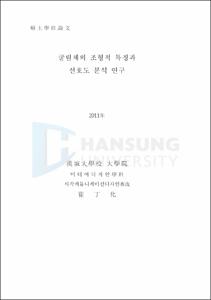굴림체의 조형적 특징과 선호도 분석 연구
= A study on the Formative Characteristics and the Preference Analysis of Gulim
- Files in This Item:
-
-
Download
 000000898109.pdf
기타 데이터 / 2.57 MB / Adobe PDF
000000898109.pdf
기타 데이터 / 2.57 MB / Adobe PDF
-
Items in Repository are protected by copyright, with all rights reserved, unless otherwise indicated.